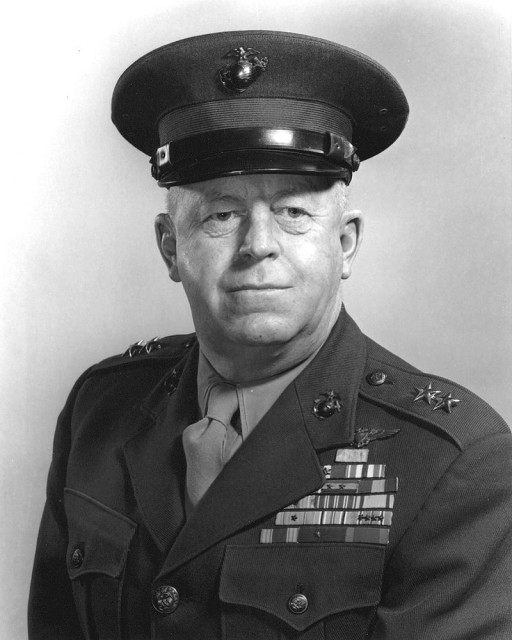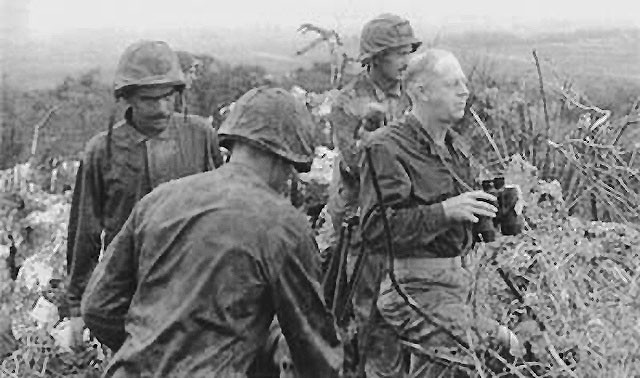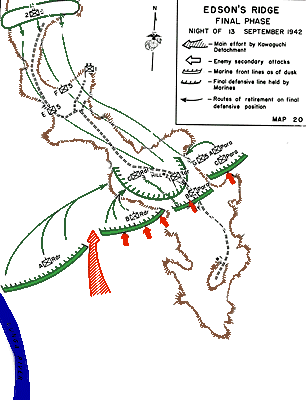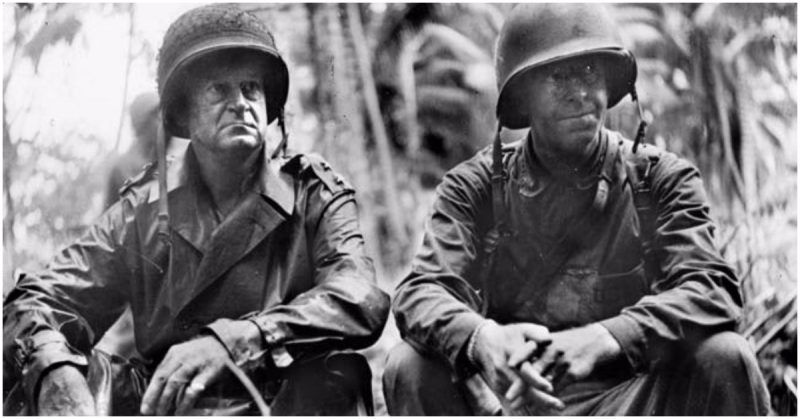After more than 24 hours of fending off a ferocious Japanese assault, the sun began to set and the Marines of 1st Raider Battalion knew they were in for another night of assault from human wave after human wave.
Just 830 Marines would face over 2,500 Japanese attackers in a few hours when then Colonel Merritt Edson stepped up onto a grenade box and addressed his Marines saying, “You men have done a great job, and I have just one more thing to ask of you. Hold out just one more night. I know we’ve been without sleep a long time. But we expect another attack from them tonight, and they might come through here. I have every reason to believe that we will have reliefs here for all of us in the morning.”
His Marines would indeed give him one more night and the Japanese more than they could handle. Seen all over the battlefield that night by his Marines as he rallied and led them amidst the heavy fire, they would name the bloody ground for which they fought “Edson’s Ridge.”
From Aviator to Grunt
The military career of Merritt Edson would be a diverse one that would take him from being a private in the National Guard to a Major General of Marines. “Red Mike” as he would subsequently become known was born in Vermont in 1897 and joined the Vermont National Guard Regiment in 1916.
He was eventually able to return to his college studies in a few months and joined the Marine Corps Reserve in October 1917. He was commissioned a second lieutenant and sent to France with the 11th Marines, but would not see any combat in the First World War.

After World War, I he served in a variety of capacities, but eventually developed an interest in flight training earning his wings in 1922. He would serve in the South Pacific out of Marine Naval Air Station in Guam where he would get his first look at some of the tropical islands where hard earned real estate would eventually bear his name.
However, physical reasons would limit his ability to fly and he eventually returned to ground duty. He would go on to command the Marine detachment which went ashore in Nicaragua in 1928 and 1929 where he would see his first action in combat and pick up the Navy Cross for his leadership under fire.

He would continue to serve with distinction in the 1930s and World War II would find him as a Colonel that was a man with the right skills, the right experience, and precisely at the right moment in history. He was given command of the First Battalion Fifth Marines where he would help train and mold them into what would become the 1st Marine Raider Battalion in early 1942.
And while he would lead his Marines in combat through various engagements early in the war, it would be a particular ridge of Guadalcanal where his place in Marine Corps history would be permanently enshrined.
Battle of Edson Ridge
In August of 1942, the Americans landed on Guadalcanal and captured a Japanese airfield under construction that would become known as Henderson Field. As it turns out, the Japanese wanted it back and the next few months would see ferocious fighting for that cause. Edson’s Raiders had endured much of this combat and on the evening of September 12, were sent to a reserve position near Henderson Field where they were expected to catch a short break and get some rest.
However, an unexpected Japanese attack that evening ruined any such plans as the Raiders of 1st Battalion were once again pitched battle for their lives.

With part of the positions overrun, Col. Edson withdrew his men the next day to a ridgeline approximately 400 yards to the south and gave the order for his Marines to prepare for its defense. It was here on this ridge the Col. Edson gave his Marines the encouragement to simply hold out one more night giving them time to mentally and physically prepare for what was to come.
And just as expected, at sunset nearly 2,500 Japanese soldiers poured out of the jungle and assaulted the 800 Marines with everything they had. Initial successes in the Japanese assault due to the sheer numerical advantage led to some Marine positions being overrun and their flanks dangerously exposed.
One Marine officer who participated recounted it as, “The Japanese attack was almost constant, like a rain that subsides for a moment and then pours the harder… When one wave was mowed down – and I mean mowed down – another followed it into death.”
As portions of the Marines begin to withdraw and it seemed like defeat was imminent, they ran into a certain Colonel who was never short of the right words to say as he rallied them to prepare the defense around Hill 123. Is often said of Colonel Edson that his Marines would follow him anywhere, but their only problem would be keeping up.
Throughout the night of September 13, Colonel Edson could always be seen just 20 yards behind the front firing line rallying his Marines and organizing their defense. At times when other Marines could be seen hugging the ground, Col. Edson exposed himself to dangerous fire in order to single-handedly save the battalion.
The Morning After
As the day broke the next morning, Edson’s Raiders were still in command of Hill 123 and the Japanese assault was repulsed. The world would often refer to this particular ridge as “Bloody Ridge,” but the Marines who fought there would only refer to it as Edson’s Ridge seeing as how much their commander was determined to own it.
For his actions and leadership under constant fire, Col. Merritt Edson would go on to receive the Medal of Honor and the respect of every man who saw him in action that on those dreaded September nights in 1942.
Col. Edson would go on to serve with distinction throughout the rest of the war and even picked up his first start to become a Brigadier General. He retired from the Marines in 1947 as a Major General and continued to serve the nation in various civil capacities.
In addition to his personal awards for gallantry in service, the USS Edson which was a Forrest Sherman-class destroyer was commissioned in his name along with a portion of Camp Pendleton where Marine recruits learn the skills of marksmanship.
But for the men of the 1st Raider Battalion in 1942, he was simply the man they didn’t want to disappoint standing 20 yards behind them in a battle for their lives and Edson Ridge.
